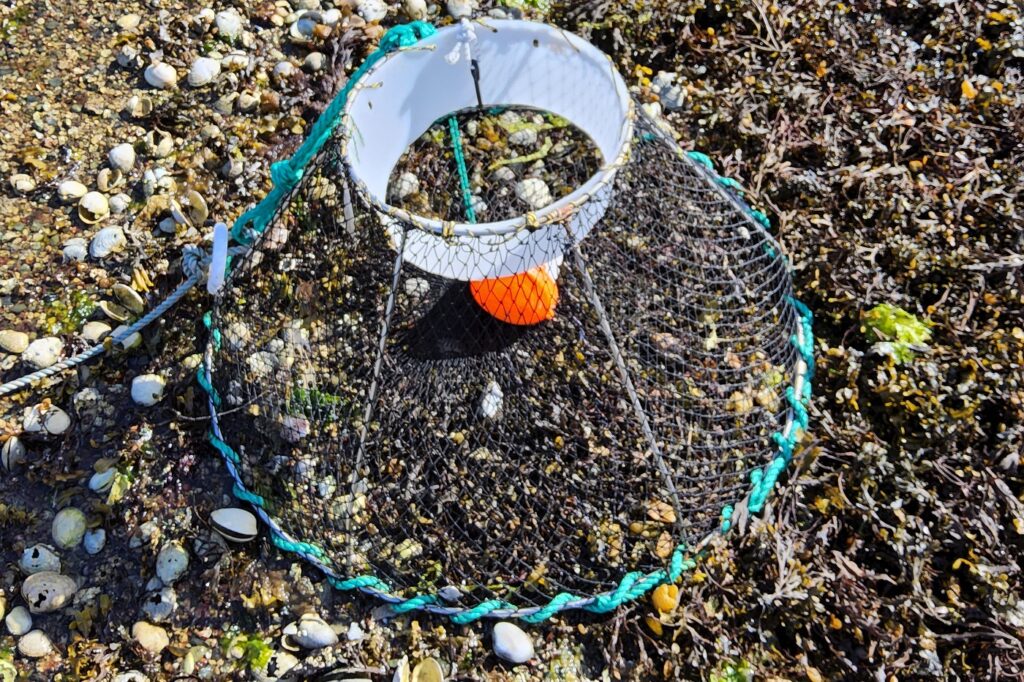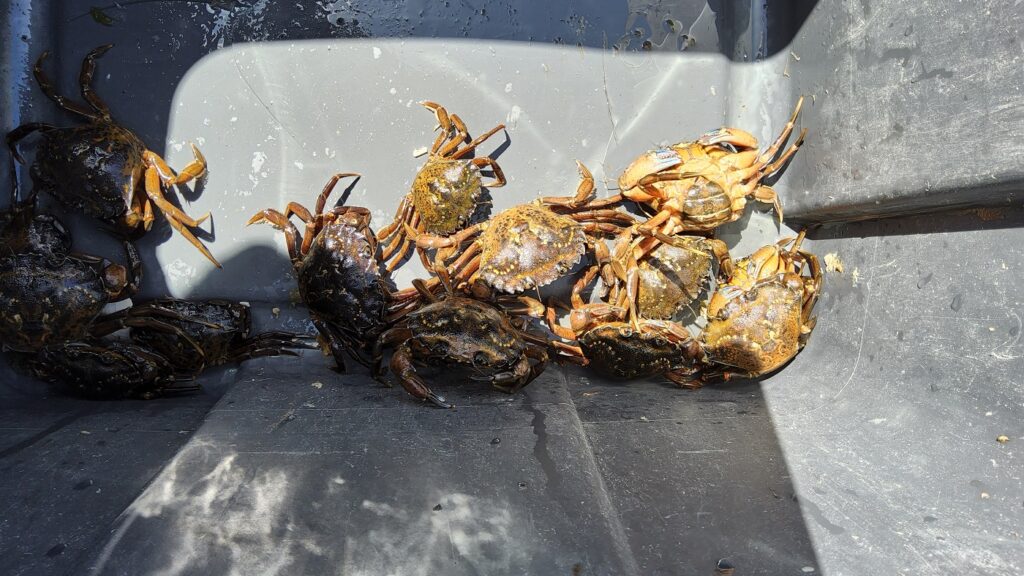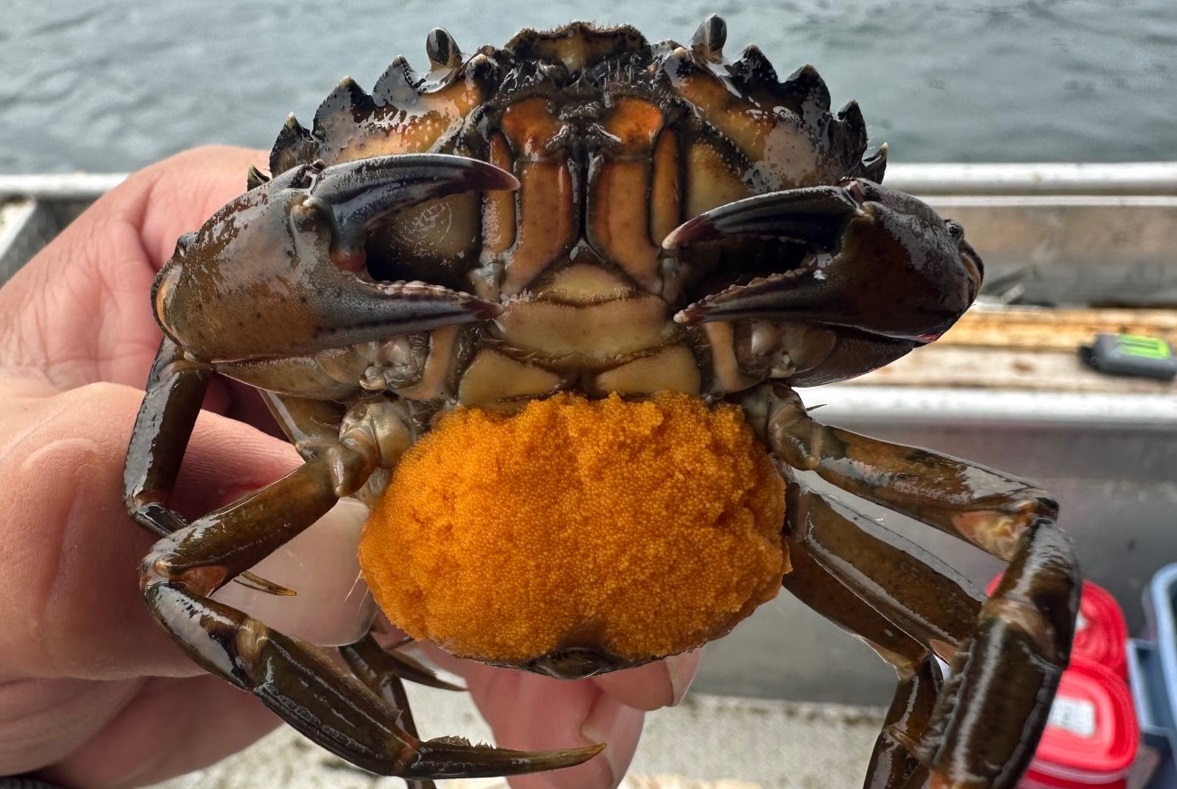This May, at the Coastal Stewardship Network Annual Gathering in Haíɫzaqv Territory, Coastal Guardians from across the North Pacific Coast took part of a full-day activity focused on European green crab.
The invasive species has already been a problem on the Central Coast and Haida Gwaii, and stewardship leaders coast-wide are raising the alarm that increasing numbers could potentially lead to major declines in native fish and shellfish populations in the future.
“European green crab is a voracious predator,” says Diana Chan, Natural Resource Manager for the Heiltsuk Integrated Resource Management Department (HIRMD), who kicked the day off with a presentation to all Guardians. “They are aggressive and territorial, and could potentially out-compete local species in important coastal areas, such as clam gardens,” she adds.
Described by DFO as “one of the world’s 10 least wanted species,” green crabs have spread around the world’s coastal areas from their native home in northern Europe, travelling in ships, including ballast water, ocean currents and fishing gear in larval form. Wherever they go, they feast on native clam and crab species, and destroy critical habitat for salmon and herring.
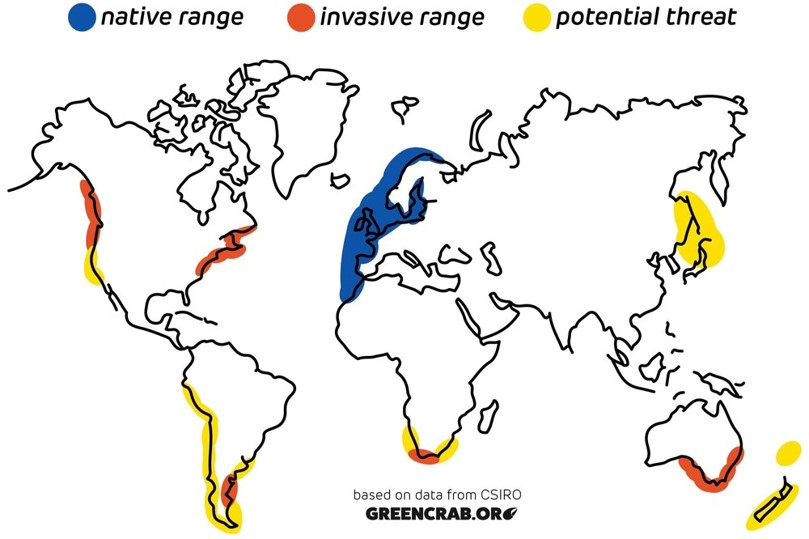
How to Keep Green Crab Numbers Down
Chan says complete eradication is highly unlikely once populations are established, since green crabs are so hardy—adults have been known to stay alive for more than two weeks in the bed of a truck! They are also very prolific, as females can release about 185,000 eggs per year. But there are ways to slow their spread and at least mitigate the damage, which was the main theme of activities at the Guardian gathering.
“Frequent trapping is the most effective way to remove green crabs,” says Chan, “along with regular monitoring to ensure they don’t get established in new areas.” But she also cautions against the “hydra effect”—an issue caused by trapping adults too intensively. Adult green crabs prey on their young, explains Chan, so taking too many adults out of the environment at one time could lead to a population explosion later, because fewer adults preying on immature green crabs allows more of them to reach maturity.
After brushing up on their knowledge of green crabs—including everything from identifying key features to the best crab trap designs and bait types to use—the Guardians headed out on boats to check nearby traps in Gale Creek, an important area for clam harvesting in Haíɫzaqv Territory.
Some traps came up empty, but the Guardians ultimately hauled out dozens of green crabs from just a few shallow areas—including one pregnant female (see top image) caught just before it released thousands of eggs into the environment.
Stopping or at least slowing the spread of invasive species like green crabs will require more regional efforts like this in the future. The learnings passed along by Heiltsuk Guardians will be highly useful for other stewardship offices across the North and Central Coast and Haida Gwaii, so that other Guardian teams can anticipate and combat the spread in its earliest stages.

